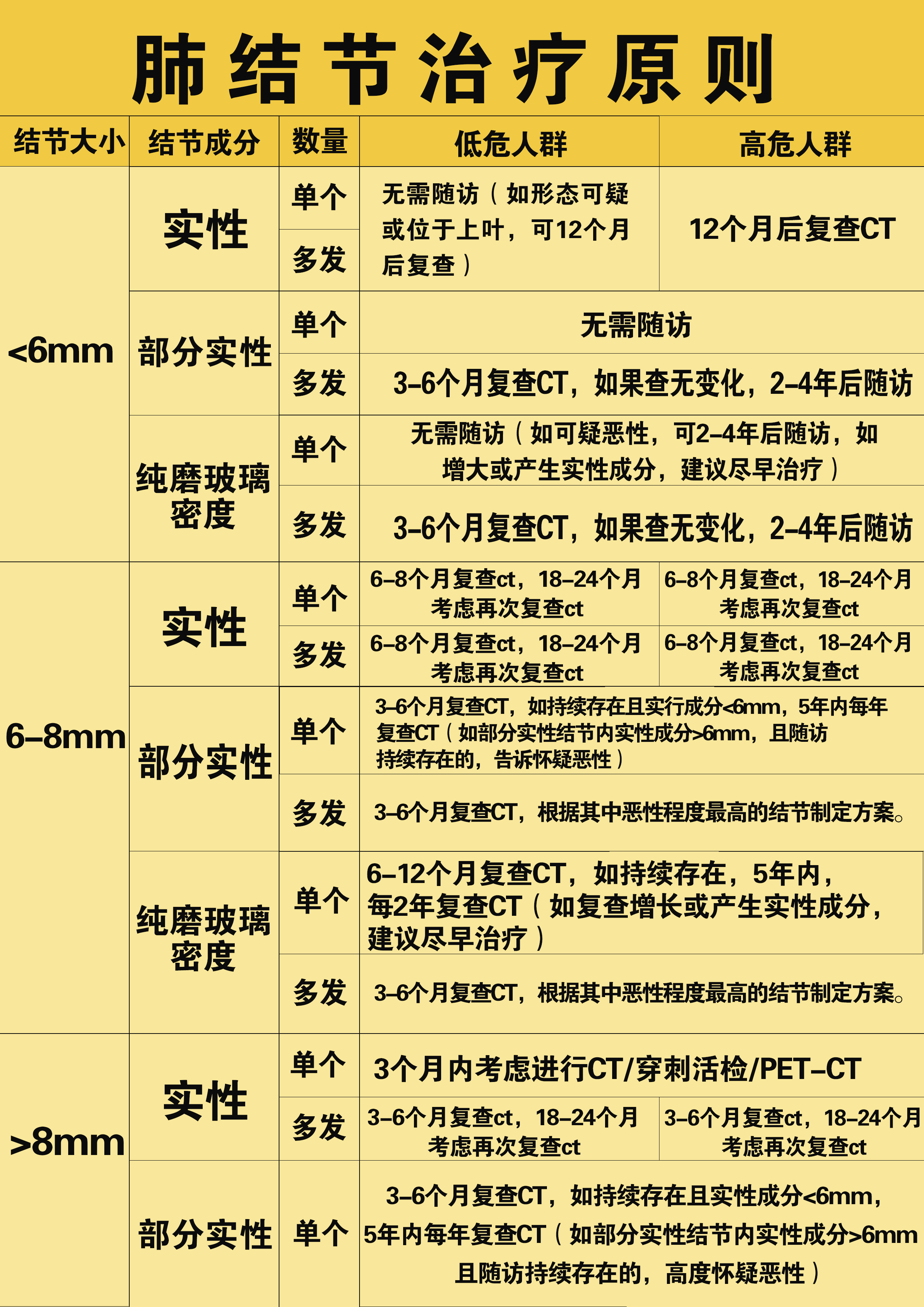
The management of pulmonary nodules depends on their size, growth rate, characteristics, and the patient's overall health. Here are some approaches:
1. Monitoring: Small, benign-appearing nodules may not require immediate treatment. Instead, they are monitored over time with repeat imaging studies, such as CT scans, to check for any changes in size or shape.
2. Imaging Tests: High-resolution CT scans are used to evaluate the nodule's characteristics, which can help determine the likelihood of it being malignant.
3. Biopsy: If a nodule appears suspicious, a biopsy may be performed. This can be done through a needle inserted into the lung (percutaneous biopsy) or using a bronchoscope.
4. Surgical Removal: Larger nodules or those with a higher suspicion of cancer may require surgical removal. The type of surgery depends on the nodule's size, location, and the patient's health.
5. Radiofrequency Ablation (RFA): For patients who are not candidates for surgery, RFA is an option. It uses electrical energy to heat and destroy the tissue in the nodule.
6. Treatment of Underlying Conditions: If the nodule is due to an infection, antibiotics or antifungal medications may be prescribed.
Regular follow-up with a healthcare provider is essential to monitor the nodule and adjust the treatment plan as needed.












